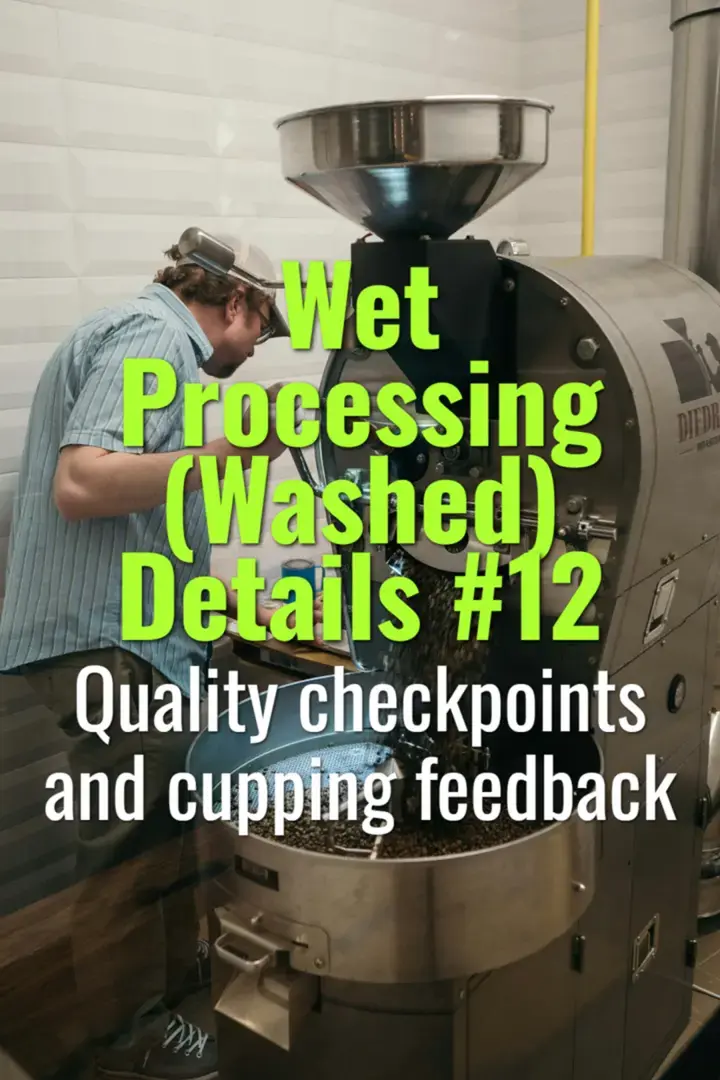Quality checkpoints and cupping feedback
This topic explains how quality checkpoints are established during washed coffee processing, and how cupping feedback connects processing practices to final flavor outcomes.
- Coffee Basics Nerds
- 2 min read
Article 12 of 12 in Wet Processing (Washed) Details/

Why Quality Checkpoints Matter
- Coffee quality can be compromised at any stage of processing.
- Establishing checkpoints ensures defects are caught early.
- Cupping feedback links farm practices to market preferences, guiding improvements.
Key Quality Checkpoints in Washed Processing
1. Cherry Reception
- Check ripeness and defect rates.
- Remove underripes, overripe, and insect-damaged cherries.
2. Sorting and Flotation
- Confirm floaters removed before pulping.
- Ensures uniform density for fermentation.
3. Fermentation Tanks
- Monitor time, temperature, and pH.
- Sample beans mid-process to assess mucilage breakdown.
4. Washing & Density Separation
- Check for thorough mucilage removal.
- Separate beans into grades for consistency.
5. Drying Stage
- Monitor moisture content with meters.
- Prevent uneven drying, mold, or contamination.
6. Storage
- Verify parchment moisture (10–12%) and bag condition.
- Inspect for pests or humidity damage.
Cupping Feedback
- Purpose: Connects processing details to final flavor.
- Process: Small samples from each lot are roasted and cupped.
- Evaluations include:
- Fragrance/aroma
- Acidity
- Body
- Flavor clarity
- Defects (sour, phenolic, musty)
Role of Feedback
- Farmers learn how fermentation time, drying speed, or sorting affected cup profile.
- Guides adjustments for future harvests.
- Encourages consistency in specialty-grade lots.
Benefits of Quality Checkpoints & Feedback
- Reduces risk of defects reaching buyers.
- Provides traceability and accountability.
- Strengthens direct trade relationships by sharing transparent data.
- Improves long-term income by aligning with market expectations.
Lasting Importance
Quality checkpoints and cupping feedback create a feedback loop between producers and buyers, turning processing from routine into precision quality management. This system elevates both farm reputation and consumer trust in the final cup.
You might also like:
- Tags:
- Lasting Importance
- Coffee Quality
- Direct Trade
- Flavor Clarity
- Moisture Content
- Acidity Body
- Specialty Grade
- Uneven Drying
- Cup Profile
- Producers Buyers
- Consumer Trust
- Cupping Feedback
- Washed Processing
- Reduces Risk
- Matter Coffee
- Feedback Loop
- Temperature Ph
- Small Samples
- Ensures Uniform
- Risk Defects
- Fermentation Tanks
- Final Cup
- Insect Damaged
- Density Separation
- Mold Contamination
- Grade Lots
- Fragrance Aroma
- Defect Rates
- Body Flavor
- Trade Relationships
- Drying Mold